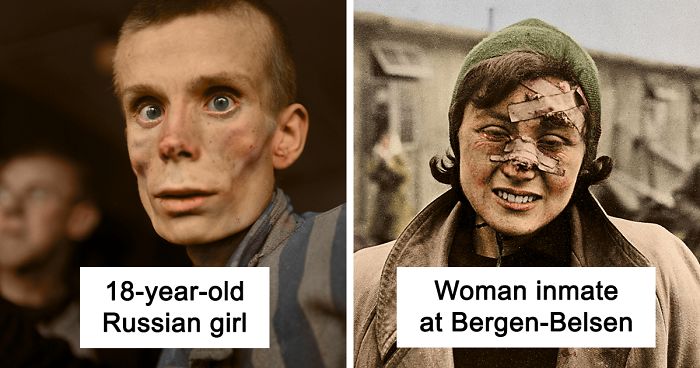
My 10 Colourised Photos Show The True Horror Of The Holocaust
“Never shall I forget the little faces of the children, whose bodies turned into wreaths of smoke beneath a silent blue sky” – Elie Wiesel, Holocaust survivor.
This week the world held Holocaust Memorial Day, marking 75 years since the liberation of Auschwitz concentration camp by the Soviets. And to mark this anniversary, I have colorized a selection of historical photos taken throughout the first few months of 1945, as the rest of the world became fully aware of the horrors of the Nazi holocaust.
This was the most harrowing photo restoration project I have ever worked on. I usually enjoy colorizing photos as the process brings the subjects to life gradually, which is a satisfying experience. Still, with this project, it was upsetting as the colorized photos are so shocking.
These old photos serve as a stark reminder of man’s inhumanity to man. I had to give myself time to do something else and try to switch off while working on these black and white photos as they made me angry. I felt sicker as the pictures came to life, but I feel it was an important thing to do, to remind people – especially younger generations, that this is historical fact and that it’s not that far back in past.
It is so important, especially as the years go on, that we do more to bring the past to life, and keep images like these relevant and shocking, so this never happens again.
The photo editing and colorizing process was also different as these people were close to death by the time of their liberation, so painting skin tones was utterly different. In color, you can see the bones and the pale, bloodless skin, and even young men look older with greying hair and dark patches around their eyes.
I am a British photo colorizer. Please visit PhotograFix on social media like Facebook, Twitter, and Instagram if you want to check out more.
More info: photogra-fix.com | Facebook | Instagram | twitter.com
The horror of the Holocaust in colour
Children at Auschwitz
Children at Auschwitz, in a still from the Soviet film of the liberation of Auschwitz, January 1945.
Starved men at Ebensee
This photo shows starved prisoners, nearly dead from hunger, posing in a concentration camp in Ebensee, Austria.
Ebensee was a sub-camp of the main camp ‘Mauthausen’ near the town of the same name. The camp was reputedly used for “scientific” experiments. It was liberated by the 80th Division of the U.S. Army.
Istvan Reiner
Istvan Reiner, aged 4, smiles for a studio portrait, shortly before being murdered at Auschwitz concentration camp.
Men at Lager Nordhausen
Two staring, emaciated men, liberated inmates of Lager Nordhausen, a Gestapo concentration camp. The camp had from 3,000 to 4,000 inmates. All were maltreated, beaten and starved.
An 18-year-old girl
An 18-year-old Russian girl during the liberation of Dachau concentration camp in 1945. Dachau was the first German concentration camp, opened in 1933.
More than 200,000 people were detained between 1933 and 1945, and 31,591 deaths were declared, most from disease, malnutrition, and suicide. Unlike Auschwitz, Dachau was not explicitly an extermination camp, but conditions were so horrific that hundreds died every week.
A living skeleton
This man looks like a living skeleton, one of the many prisoners of the Ebensee concentration camp in Austria.
Burning Bergen-Belsen
My Great Grandfather Charles Martin King Parsons took this photo as he was a chaplain with the British Army and he entered Bergen-Belsen prison camp in April 1945.
The camp was rife with typhus, and once the large wooden huts had been cleared of the surviving prisoners, they were burnt to the ground in May 1945.
Taken by C.M.K. Parsons
Like many people affected by the horrors they saw during the war, my Great Grandfather never really spoke about his experiences at Bergen-Belsen and these photos show why.
He also took a series of photos including the mass graves around Belsen which I did not want to colourise as it didn’t feel like the right thing to do. These photos can be seen here.
Woman at Bergen-Belsen
One of the victims at Bergen-Belsen was this young woman, her face still bearing the scars of a terrible beating by the SS guards.
Holocaust survivor
It is hard to find any hope when viewing the horrors of these photos, but I wanted to include this one, as there were survivors of the Holocaust, many of whom are still alive today.
This photo shows a young Jewish refugee, rescued from a concentration camp, resting up in a hospital bed in Malmö, southern Sweden in 1945.
706Kviews
Share on FacebookAnd even more succumb to conspiracy theories which root in antisemitism. And even more like to blame others for the misery in their life, thereby sending hatred to the world. You always hear "this cannot happen again". I am doubtful if mankind has learned its lesson.
Load More Replies...I know lots of people are going to disagree we me on this but people should know about the holocaust because it actually happened and lot of people died and even more were affected by it.
I agree, because if we do not learn from our history, we are doomed to repeat it.
Load More Replies...I can't imagine the tears you shed creating these photos. God Bless your heart and soul xoxo
Thank you, it was not an easy one but I'm really pleased with the response which has made it worthwhile.
Load More Replies...I can't believe how many people there are now that deny the holocaust. Conspiracy theories have infected the brains of humanity. Racism still pervades and flourishes under right wing leaders. We all need to collectively say, "never again"! Not one more genocide. We need to embrace the teachings of Martin Luther King, Jr. and those like him. Humanity will only survive through unity, compassion, and helping each other.
They deny it but of the guilt that they feel deep inside for being utterly disgusting people. They have to deflect it by pretending it didn't happen, even though there's a wealth of photo and video evidence.
Load More Replies...I did an in depth project on the Holocaust in 7th grade - I spent a few nights crying because it was just so horrid.
I understand! I never could make myself go to the holocaust museum that's nearby (I live in Skokie, IL, the village with the greatest number of Holocaust survivors in the US) - because it is just so painful and horrible and heart-wrenching.
Load More Replies...This was a very painful time in the history. And it needs to be remembered.This was a very painful time in the history. And it needs to be remembered and for the people who think that it didn't happen well maybe looked up and you'll see how horrific this time.Was and how people suffered. than u to the artist who did this let this memory be continued.!
There are many other events of nearly the magnitude of vicious, violent killing of other people, not on the scale of the Holocaust but tragic just the same. Pick a century I'll name an even of near the pain and depth of the Holocaust.
Load More Replies...This series was moving. The photographs from that era, while horrific on their own, are hard to accept as being a true event. Adding color has brought it back to the forefront and gives the event a modernized feel to it. I would have liked to have seen a comparison between the black/white and the color compositions to show the true nature of our history. To those who perished, have since passed and will pass...may they all rest in peace
I find they even more upsetting in colour...it seems to bring them so much closer to my time in life.
I appreciate all above who point out the need to let the our outrage about the evils of the past stir our passion for rooting out injustices and cruelties in the present— yes globally but also domestically. Always clean up your own house first before pointing fingers at others.
Load More Replies...One of the craziest things I read about history is that the majority of the world didn't really care that the Jews were being killed. As a matter of fact, quite a few (not just the Nazis) were totally cool with it. If Japan had never bombed Pearl Harbor, I wonder what would have gotten the US involved! Additionally, there was a max exodus of them right before it all began and surprise surprise, no one wanted to take them in. Guess the more things change, the more things stay the same...food for thought: https://time.com/5327279/ushmm-americans-and-the-holocaust/
Yes, I've always wondered about what would have happened if the Americans hadn't joined in. Also, if Neville Chamberlain had had a backbone and prepared the country for ww2 rather than pretending Hitler would be diplomatic and listen, it left the allies at a real resource disadvantage when war was finally declared
Load More Replies...I see those photos and know that there are so many people saying this never happened. It's disgusting to know that these people exist. How can anybody say this never happened?
Anyone who needs to see colorized pix of the Holocaust to "feel" it was true? Probably needs more than colorized pix to believe such evil occurs. And, yes, I said *occurs*. Genocide didn't stop in 1945. ANyone who thinks it stopped with the fall of the Nazis hasn't paid attention to the world news.
Hi Leo, the wording for the title wasn't my choice unfortunately and I agree with you. It had been my intention for the photos to be a reminder of what happened as sadly people do forget and have forgotten around the world. Tom
Load More Replies...and now we have the Uighur who faces basically the same thing, if not worse.
Probably worse according to the pictures and stories of torture that have come out.
Load More Replies...There are no words to describe the horrors of the holocaust - I've watched so many documentaries, seen so many photos are read so many articles much about it and it is still incomprehensible.
Also the fact that the holocaust was able to be setup and continue for so long without any government getting involved for so long; Even after spies going into the camps and telling governments what was going on - it is astounding.
Load More Replies...I was fortunate enough to visit Ann Frank's house, the Museum of Tolerance in LA, and be welcomed into the homes and synagogues of many Jewish people. I cannot and WILL NOT allow or tolerate anyone who denies or minimizes the Shoah. We are seeing facism, "detainment camps," anti-semitism and xenophobic jingoism beginning to creep across the nation and our world. At the end of the day, it won't matter what you "believed," or what political party you support, all that matters is what you allowed to be done in your name. History will not judge you kindly just because you blindly followed a corrupt and venal politician with his own propaganda machine.
In case it isn't obvious, I mean Trump. If you support him or his policies you're a dumpsterfire of a person. You might be really nice, but when you look away, or justify his detention camps you forfeit your ability to be called a "good" person. Don't @me, because I don't talk to trash, only the mentally ill do that.
Load More Replies...All religion was outlawed in the Reicht, as they felt 'false gods' got in the way of Aryan values.
Load More Replies...My grandpa was in the Army unit that liberated Dakau. He didn't speak a lot about it but what he did say sounded horrible. It scarred him for his life of what he saw when he arrived there. He and a buddy wrote a memoir, though I don't think it was very published. It contained pictures that he took. They are hard to look at. Thank you for getting the courage to do what you did. I know that it must have been very difficult but was needed. Everyone must remember what happened and know that it did in fact happen so that we never allow this to happen again.
"a Gestapo concentration camp." Not the correct terminology. It was a concentration camp, nothing else. The Gestapo had nothing to do with it. They were a different arm of Hitler's government
Thanks Katrina, apologies the caption was copied from the original photo caption in the USHMM collection.
Load More Replies...Please forward thes on, share them. Continue to keep the memory alive. Thank you to the person that mentioned the Uighur pogram, mass incarceration and brain washing effort by the Chinese Government. There have been many more since the Jewish Holocaust, the Rawanda Genocide, in North Korea over 200,000 are in gulags. In Indonesia and India Christians are being attacked and murdered for their faith. The same in India, and Pakistan. In Iran you can go to,prison for years for leaving the Muslim religion for the Christian Faith. Christians in the Middle East have been decimated by ISIS, Al Queda and the Turkish Army. Egypt is majorly guilty of burning churches and imprisoning Christians for believing the wrong way. Boko Harem in Nigeria has kidnapped, bombed, beaten and imprisoned Christians and people of other faiths. Venezuela, and Cuba have touted the Marxist dogma, jailing beating and denying right to Christians of many denominations.
Not a fan of the recent trend towards more extreme governments on both sides, eh?
Load More Replies...A lot. A vast number of the Jews that were killed WERE Germans. Holocaust denial is illegal in Germany. Many Germans are passionate about human rights and German schools educate pupils about the dangers of fear and prejudice. But there is a rising undercurrent of racism creeping back into Germany. In the mainstream however, racism of the far right is vilified. Just last week a politician who won a seat because he received support from a far right party resigned because people would not tolerate it. Even Angela Merkelmade public comments that Germany could not tolerate it.
Load More Replies...This cannot happen again, ?????? okay lets tone it down a bit to no gas chambers but torture, murder, outright slaughter of women and children and then shooting deaths of hundreds of men. You think it does not happen ? will not happen? then look again. Indonesia has been doing this for a long time in ( west)Papua New Guinea and no one NO ONE!!! has tried to stop it not the UN ( Useless but they know) Not the Australian Government who sends Aid to Indonesia not another country is interested! WHY? NO ONE WANTS TO UPSET INDONESIA!!!!! For my way of thinking the old phrase "this cannot or will not happen again" is just a cover for all that these ignorant murdering bastards do. People actually believe that phrase .
We shall never forget what is holocaust and how did it star.. The biggest camp organized by nasists was placed in Poland, called Auschwitz Birkenau. In this german concentration camp 6 milions of People were killed during the 2nd World war.. 6milions of People. Not only jewish... We shall never forget!
Actually not accurate. There were six million Jews alone but a much greater number than that of other people, including gay people, “gypsies”, Russians, the disabled, and many more.
Load More Replies...Holocaust deniers are part of why the world is such a shitty place. They are of the mentality that created the holocaust in the first place. Thank you for these pictures. The world must never forget.
I stumbled upon your site and am so appreciative that I did. I am in awe of your Great Grandfather. His pictures show the true horrors of WWII. Thank you for sharing them.
And the worse part is that not only nazis did those atrocities. Japan army were said to do even more horrible things in their prison camps on china and south korea. Google "maruta ww2", they were innocent people, even toddlers, used as experiment subjects by the japan army. But the world has changed. I am so glad we have international laws about war crimes. Yet we still have to acknowledge that such horrible things happened in the past, so that it wouldn't happen again.
I wish schools right across the world will make history compulsory so all students can witness this kind of barbarism.
Could you remove adds from this article, I think it’s kind of disrespectful really.
All of these horrible acts become even more disgusting if you know the Nazis already knew in the beginning of 1942 they wouldn't win the war. So they made plans to kill as many people as possible during the time left. But concentration camps were not even a German "invention". They existed in many countries before and after. Stalin had 18 million people imprisoned in labor camps known as Gulag. Four million people died during that time from hunger, diseases, the cold weather, hard work, torture or murder. Mankind is sometimes just sickening.
Things like this have to be stopped from happening. We have to treat all people with dignity and respect. Whether you're religious or not, we all come from the same God and need to love one another. We have to stop allowing people to poison our minds with hateful opinions and thoughts. To everyone who reads this:WE HAVE TO STOP THE HATE!
Tom, I think you did a wonderful job and thank you for sharing your work! Also, you have handled the negative comments on here so eloquently and professionally.
Such heartbreak. Thank you for trying to put a sense of reality to these images. May their memories continue to be a blessing.
And Democrats under the criminal Biden occupation have resurrected the Nazis
My Grandfather was one of the army personnel shipped over for the evacuation and clean up of the Bergen-Belsen camps . He too never spoke about it to us but we have a newspaper cutting of him receiving medals many years after the event for the work he did during those horrific times. When will humanity rise above the ego driven desire for destruction and cruelty to our fellow sacred life entity brothers the world over. We must evolve our consciousness to eradicate the demons that posses a soul to commit such atrocious unspeakable acts of horror. For those that can are not human and are dispossessed of humanities heart and soul and the sacred essence of divine love.
I cry everytime i look at these pictures. The way that these innocent people were treated is disgusting and no one should ever have to got hrough what these people did. Some may call them weak but i think all slavery and holocaust victims are stronger than we know.
I tell this for a point of perspective and reference. My father was on Iwo Jima at age 17 for 23 days. We, his family, also suffered from what he saw and did since it affected him so much. I cannot imagine how those who survived and their progeny have not suffered for generations and generations. Our fellow Jewish citizens of all ages deserve our empathy, and need to know that we will do our best to never let this happen again. Nevertheless, over 70 million people voted for tRUMP who called the Nazis at Charlottesville good people.
Enslaving, gassing and starving millions of "racial enemies" is, like all genocide, unjustifiable. But worse than what the Nazis did is the current abortion genocide, which kills in just one year, more innocent than the Nazis in their death camps between 1933 and 1945. Killing 6 or much more million "racial enemies" is execrable, but even more execrable is that millions of denatured mothers (instead of giving their children up for adoption), authorize doctors (traitors to Hippocratic oath to defend life) to dismember their unborn child that they carry in their own womb, all of this promoted and many times paid for by genocidal governments that are obliged, by Constitutions and laws, to defend the lives of their nationals, especially when they are totally innocent and unprotected, as are unborn humans. The contemporary world criticizes, with good reason, the Nazis, but it is much worse.
Your work is beautiful! Thank you for bringing these photos to life since so much was taken away from these poor souls! You've at least given these events some colour in order to show the world that these things existed and we must never forget.
I feel this has more to do with a business promotion than with the horrors of the Holocaust. I think if someone wants to advertise their company or their commercial skills, it would be better not to use victims of Shoah to do so. Respectfully, as one who is missing 3/4 of an entire family because of the Holocaust.
Additional info: let's not forget that in addition to camps (which killed Jewish, Polish, Russian people etc.), those mf-ers also instigated uprisings in Baltic countries encouraging the locals to murder their Jewish neighbors to cut down on the cost to the Nazi's. Tens of thousands of people at a time! And the gas-vans that would drive around to communities, round up the disabled/handicapped and murder them on the spot. We can never forget that evil exists and that when evil comes to power the consequences for humanity can be devastating. Thank you OP! You have my humble respect!
Did you ever wondered why is human race so evil??? There's a simple,straightforward answer to that question.
What strikes me, on a side note, is that I've never heard a single thing about the prisoners turning against one another. Yet, so many movies, stories, and news forcasts talk about how immediately in a crisis situation, that people will start stealing from one another, murdering one another, etc. Did the prisoners turn on each other? I've never heard that. They all starved together.
I think lots of them did. Steal from starvation, there are those who killed to survive or even ate dead people to survive. I've read lots of real stories books from WWII and the reality there was absolutely unimaginable.
Load More Replies...Thank you for this valuable work. Every image was very moving but I especially appreciated the tie to your great-grandfather and the way you saved that last image for the end.
Thank you for calling attention to the past and helping us see that “the past is present.” Why is it so much harder to recognize the pain and injustice of our own time? It is like a parent who refuses to believe their child is being abused. Acknowledging the reality seems too painful to bear. Acknowledging reality means seeing our complicity. Acknowledging the reality means recognizing the necessity of taking sacrificial action. I am thankful for those willing to call out modern injustices and even more for those willing to take action to end it.
People look at these in horror and ask themselves how can any human being treat another human being like this, then I think of Donald Trump taking illegals children and placing them in cage. Where is our outrage? Are we any better than the Nazis that cage these human beings?
Those pictures are so disturbing because they are real. To this day we ask ourselves how anyone could do this to another human. Someone not unlike ourselves. Only God can have mercy on their souls because they will get none hereon earth.
I always reference back to that time as being the worst in comparison to any evil nowadays
I feel bad for the Russian girl, because a lot of USSR citizens freed in camps only faced cams and forced labor in their own country afterwards. Because, you know, good guys don't get captured, so you must be a collaborator... My great grandfather died in the battle of Kursk, was listed a MIA for many years. My great-grandmother was left raising her five children alone without any government pension or support because, well, he's MIA, we don't know what happened to him - maybe he's a traitor? Sickening!
I especially feel bad for the boy who smiled and was oblivious to the whole thing thinking he was having a nice, cute picture taken of him. I almost cried thinking about the people who were murdered about beliefs. Would you kill someone for believing Santa Claus? No, that's what I thought and yes I know the question of God is different but that doesnt matter. Many people with disabilities and mental illnesses were deemed not 'perfect' but the people who thought that probably had a mental illness of their own...
its hard not to tear up just imagining the horrors these people suffered behind these photos.
I don't think these photos needed colour to show the true horror. And the photos that OP didn't feel right in colourizing probably would have made a bigger impact - those kinds of photos show the true horror. But nice work and I'm never unhappy to see those who were lost and those who survived remembered and honoured by that memory.
May nobody ever get away with this kind of barbarism - I wish everyone in the world can see these sad pictures. History builds character because it shows the wrongs of the past. Every student in the world should be able to see this.
I have commented before, but feel I must do it again. To all of you who feel that every article is an opportunity to talk about your political opinions let me say this: Millions of innocent people lost their lives in the Holocaust and I don't think that they would appreciate photos of their last days being used to argue about politics. You can believe whatever you want about politics, however there is no need to be so hateful and negative in the comment section. We all think differently about things and that is okay. Spouting hate and insults is not the same as stating your opinion. One human to several million others, can we please stop the hate and insults and just try to get along?
I don't really understand why these needed to be colorized, I think they are more powerful in black and white.
There are still people who agree with Nazi principles today, Trump being one of them. There's nothing wrong with calling them out on it. If they are racist and want foreigners to die just for being foreign, that's something to deplore.
Load More Replies...Freed slaves in the South after the civil war were kept in concentration camps. Please go back and read your history.
Load More Replies...Thanks for your feedback. I hadn't stated these photos were art (I had put the piece in 'history' myself) and had no intention to offend but to highlight something that is sadly being forgotten as the survivors pass away each year. I appreciate not everybody likes colourised photos but disrespecting the subjects was far from my intention, Tom.
Load More Replies...Quite honestly, modern leftists, socialists, communists and democrats share none of the same ideologies as the nazi regime. Democrats and communists are polar opposites. Every modern country has socialism and the ones with the highest quality of life has more socialist policies (universal health care, guaranteed paid vacation, maternity/paternity leave, livable wages, emergency services, etc). If you want to get into sharing ideologies with the nazi regime and American political parties, the only similarities I can see is racism, nationalism, intolerance, and demonizing a minority. Those ideas tend to come from the right... We can all benefit from taking a look at our own values and concerns and critically comparing it to the people we vote to represent us in government. Get away from a team, us vs them, competitive mentality.
Load More Replies...And even more succumb to conspiracy theories which root in antisemitism. And even more like to blame others for the misery in their life, thereby sending hatred to the world. You always hear "this cannot happen again". I am doubtful if mankind has learned its lesson.
Load More Replies...I know lots of people are going to disagree we me on this but people should know about the holocaust because it actually happened and lot of people died and even more were affected by it.
I agree, because if we do not learn from our history, we are doomed to repeat it.
Load More Replies...I can't imagine the tears you shed creating these photos. God Bless your heart and soul xoxo
Thank you, it was not an easy one but I'm really pleased with the response which has made it worthwhile.
Load More Replies...I can't believe how many people there are now that deny the holocaust. Conspiracy theories have infected the brains of humanity. Racism still pervades and flourishes under right wing leaders. We all need to collectively say, "never again"! Not one more genocide. We need to embrace the teachings of Martin Luther King, Jr. and those like him. Humanity will only survive through unity, compassion, and helping each other.
They deny it but of the guilt that they feel deep inside for being utterly disgusting people. They have to deflect it by pretending it didn't happen, even though there's a wealth of photo and video evidence.
Load More Replies...I did an in depth project on the Holocaust in 7th grade - I spent a few nights crying because it was just so horrid.
I understand! I never could make myself go to the holocaust museum that's nearby (I live in Skokie, IL, the village with the greatest number of Holocaust survivors in the US) - because it is just so painful and horrible and heart-wrenching.
Load More Replies...This was a very painful time in the history. And it needs to be remembered.This was a very painful time in the history. And it needs to be remembered and for the people who think that it didn't happen well maybe looked up and you'll see how horrific this time.Was and how people suffered. than u to the artist who did this let this memory be continued.!
There are many other events of nearly the magnitude of vicious, violent killing of other people, not on the scale of the Holocaust but tragic just the same. Pick a century I'll name an even of near the pain and depth of the Holocaust.
Load More Replies...This series was moving. The photographs from that era, while horrific on their own, are hard to accept as being a true event. Adding color has brought it back to the forefront and gives the event a modernized feel to it. I would have liked to have seen a comparison between the black/white and the color compositions to show the true nature of our history. To those who perished, have since passed and will pass...may they all rest in peace
I find they even more upsetting in colour...it seems to bring them so much closer to my time in life.
I appreciate all above who point out the need to let the our outrage about the evils of the past stir our passion for rooting out injustices and cruelties in the present— yes globally but also domestically. Always clean up your own house first before pointing fingers at others.
Load More Replies...One of the craziest things I read about history is that the majority of the world didn't really care that the Jews were being killed. As a matter of fact, quite a few (not just the Nazis) were totally cool with it. If Japan had never bombed Pearl Harbor, I wonder what would have gotten the US involved! Additionally, there was a max exodus of them right before it all began and surprise surprise, no one wanted to take them in. Guess the more things change, the more things stay the same...food for thought: https://time.com/5327279/ushmm-americans-and-the-holocaust/
Yes, I've always wondered about what would have happened if the Americans hadn't joined in. Also, if Neville Chamberlain had had a backbone and prepared the country for ww2 rather than pretending Hitler would be diplomatic and listen, it left the allies at a real resource disadvantage when war was finally declared
Load More Replies...I see those photos and know that there are so many people saying this never happened. It's disgusting to know that these people exist. How can anybody say this never happened?
Anyone who needs to see colorized pix of the Holocaust to "feel" it was true? Probably needs more than colorized pix to believe such evil occurs. And, yes, I said *occurs*. Genocide didn't stop in 1945. ANyone who thinks it stopped with the fall of the Nazis hasn't paid attention to the world news.
Hi Leo, the wording for the title wasn't my choice unfortunately and I agree with you. It had been my intention for the photos to be a reminder of what happened as sadly people do forget and have forgotten around the world. Tom
Load More Replies...and now we have the Uighur who faces basically the same thing, if not worse.
Probably worse according to the pictures and stories of torture that have come out.
Load More Replies...There are no words to describe the horrors of the holocaust - I've watched so many documentaries, seen so many photos are read so many articles much about it and it is still incomprehensible.
Also the fact that the holocaust was able to be setup and continue for so long without any government getting involved for so long; Even after spies going into the camps and telling governments what was going on - it is astounding.
Load More Replies...I was fortunate enough to visit Ann Frank's house, the Museum of Tolerance in LA, and be welcomed into the homes and synagogues of many Jewish people. I cannot and WILL NOT allow or tolerate anyone who denies or minimizes the Shoah. We are seeing facism, "detainment camps," anti-semitism and xenophobic jingoism beginning to creep across the nation and our world. At the end of the day, it won't matter what you "believed," or what political party you support, all that matters is what you allowed to be done in your name. History will not judge you kindly just because you blindly followed a corrupt and venal politician with his own propaganda machine.
In case it isn't obvious, I mean Trump. If you support him or his policies you're a dumpsterfire of a person. You might be really nice, but when you look away, or justify his detention camps you forfeit your ability to be called a "good" person. Don't @me, because I don't talk to trash, only the mentally ill do that.
Load More Replies...All religion was outlawed in the Reicht, as they felt 'false gods' got in the way of Aryan values.
Load More Replies...My grandpa was in the Army unit that liberated Dakau. He didn't speak a lot about it but what he did say sounded horrible. It scarred him for his life of what he saw when he arrived there. He and a buddy wrote a memoir, though I don't think it was very published. It contained pictures that he took. They are hard to look at. Thank you for getting the courage to do what you did. I know that it must have been very difficult but was needed. Everyone must remember what happened and know that it did in fact happen so that we never allow this to happen again.
"a Gestapo concentration camp." Not the correct terminology. It was a concentration camp, nothing else. The Gestapo had nothing to do with it. They were a different arm of Hitler's government
Thanks Katrina, apologies the caption was copied from the original photo caption in the USHMM collection.
Load More Replies...Please forward thes on, share them. Continue to keep the memory alive. Thank you to the person that mentioned the Uighur pogram, mass incarceration and brain washing effort by the Chinese Government. There have been many more since the Jewish Holocaust, the Rawanda Genocide, in North Korea over 200,000 are in gulags. In Indonesia and India Christians are being attacked and murdered for their faith. The same in India, and Pakistan. In Iran you can go to,prison for years for leaving the Muslim religion for the Christian Faith. Christians in the Middle East have been decimated by ISIS, Al Queda and the Turkish Army. Egypt is majorly guilty of burning churches and imprisoning Christians for believing the wrong way. Boko Harem in Nigeria has kidnapped, bombed, beaten and imprisoned Christians and people of other faiths. Venezuela, and Cuba have touted the Marxist dogma, jailing beating and denying right to Christians of many denominations.
Not a fan of the recent trend towards more extreme governments on both sides, eh?
Load More Replies...A lot. A vast number of the Jews that were killed WERE Germans. Holocaust denial is illegal in Germany. Many Germans are passionate about human rights and German schools educate pupils about the dangers of fear and prejudice. But there is a rising undercurrent of racism creeping back into Germany. In the mainstream however, racism of the far right is vilified. Just last week a politician who won a seat because he received support from a far right party resigned because people would not tolerate it. Even Angela Merkelmade public comments that Germany could not tolerate it.
Load More Replies...This cannot happen again, ?????? okay lets tone it down a bit to no gas chambers but torture, murder, outright slaughter of women and children and then shooting deaths of hundreds of men. You think it does not happen ? will not happen? then look again. Indonesia has been doing this for a long time in ( west)Papua New Guinea and no one NO ONE!!! has tried to stop it not the UN ( Useless but they know) Not the Australian Government who sends Aid to Indonesia not another country is interested! WHY? NO ONE WANTS TO UPSET INDONESIA!!!!! For my way of thinking the old phrase "this cannot or will not happen again" is just a cover for all that these ignorant murdering bastards do. People actually believe that phrase .
We shall never forget what is holocaust and how did it star.. The biggest camp organized by nasists was placed in Poland, called Auschwitz Birkenau. In this german concentration camp 6 milions of People were killed during the 2nd World war.. 6milions of People. Not only jewish... We shall never forget!
Actually not accurate. There were six million Jews alone but a much greater number than that of other people, including gay people, “gypsies”, Russians, the disabled, and many more.
Load More Replies...Holocaust deniers are part of why the world is such a shitty place. They are of the mentality that created the holocaust in the first place. Thank you for these pictures. The world must never forget.
I stumbled upon your site and am so appreciative that I did. I am in awe of your Great Grandfather. His pictures show the true horrors of WWII. Thank you for sharing them.
And the worse part is that not only nazis did those atrocities. Japan army were said to do even more horrible things in their prison camps on china and south korea. Google "maruta ww2", they were innocent people, even toddlers, used as experiment subjects by the japan army. But the world has changed. I am so glad we have international laws about war crimes. Yet we still have to acknowledge that such horrible things happened in the past, so that it wouldn't happen again.
I wish schools right across the world will make history compulsory so all students can witness this kind of barbarism.
Could you remove adds from this article, I think it’s kind of disrespectful really.
All of these horrible acts become even more disgusting if you know the Nazis already knew in the beginning of 1942 they wouldn't win the war. So they made plans to kill as many people as possible during the time left. But concentration camps were not even a German "invention". They existed in many countries before and after. Stalin had 18 million people imprisoned in labor camps known as Gulag. Four million people died during that time from hunger, diseases, the cold weather, hard work, torture or murder. Mankind is sometimes just sickening.
Things like this have to be stopped from happening. We have to treat all people with dignity and respect. Whether you're religious or not, we all come from the same God and need to love one another. We have to stop allowing people to poison our minds with hateful opinions and thoughts. To everyone who reads this:WE HAVE TO STOP THE HATE!
Tom, I think you did a wonderful job and thank you for sharing your work! Also, you have handled the negative comments on here so eloquently and professionally.
Such heartbreak. Thank you for trying to put a sense of reality to these images. May their memories continue to be a blessing.
And Democrats under the criminal Biden occupation have resurrected the Nazis
My Grandfather was one of the army personnel shipped over for the evacuation and clean up of the Bergen-Belsen camps . He too never spoke about it to us but we have a newspaper cutting of him receiving medals many years after the event for the work he did during those horrific times. When will humanity rise above the ego driven desire for destruction and cruelty to our fellow sacred life entity brothers the world over. We must evolve our consciousness to eradicate the demons that posses a soul to commit such atrocious unspeakable acts of horror. For those that can are not human and are dispossessed of humanities heart and soul and the sacred essence of divine love.
I cry everytime i look at these pictures. The way that these innocent people were treated is disgusting and no one should ever have to got hrough what these people did. Some may call them weak but i think all slavery and holocaust victims are stronger than we know.
I tell this for a point of perspective and reference. My father was on Iwo Jima at age 17 for 23 days. We, his family, also suffered from what he saw and did since it affected him so much. I cannot imagine how those who survived and their progeny have not suffered for generations and generations. Our fellow Jewish citizens of all ages deserve our empathy, and need to know that we will do our best to never let this happen again. Nevertheless, over 70 million people voted for tRUMP who called the Nazis at Charlottesville good people.
Enslaving, gassing and starving millions of "racial enemies" is, like all genocide, unjustifiable. But worse than what the Nazis did is the current abortion genocide, which kills in just one year, more innocent than the Nazis in their death camps between 1933 and 1945. Killing 6 or much more million "racial enemies" is execrable, but even more execrable is that millions of denatured mothers (instead of giving their children up for adoption), authorize doctors (traitors to Hippocratic oath to defend life) to dismember their unborn child that they carry in their own womb, all of this promoted and many times paid for by genocidal governments that are obliged, by Constitutions and laws, to defend the lives of their nationals, especially when they are totally innocent and unprotected, as are unborn humans. The contemporary world criticizes, with good reason, the Nazis, but it is much worse.
Your work is beautiful! Thank you for bringing these photos to life since so much was taken away from these poor souls! You've at least given these events some colour in order to show the world that these things existed and we must never forget.
I feel this has more to do with a business promotion than with the horrors of the Holocaust. I think if someone wants to advertise their company or their commercial skills, it would be better not to use victims of Shoah to do so. Respectfully, as one who is missing 3/4 of an entire family because of the Holocaust.
Additional info: let's not forget that in addition to camps (which killed Jewish, Polish, Russian people etc.), those mf-ers also instigated uprisings in Baltic countries encouraging the locals to murder their Jewish neighbors to cut down on the cost to the Nazi's. Tens of thousands of people at a time! And the gas-vans that would drive around to communities, round up the disabled/handicapped and murder them on the spot. We can never forget that evil exists and that when evil comes to power the consequences for humanity can be devastating. Thank you OP! You have my humble respect!
Did you ever wondered why is human race so evil??? There's a simple,straightforward answer to that question.
What strikes me, on a side note, is that I've never heard a single thing about the prisoners turning against one another. Yet, so many movies, stories, and news forcasts talk about how immediately in a crisis situation, that people will start stealing from one another, murdering one another, etc. Did the prisoners turn on each other? I've never heard that. They all starved together.
I think lots of them did. Steal from starvation, there are those who killed to survive or even ate dead people to survive. I've read lots of real stories books from WWII and the reality there was absolutely unimaginable.
Load More Replies...Thank you for this valuable work. Every image was very moving but I especially appreciated the tie to your great-grandfather and the way you saved that last image for the end.
Thank you for calling attention to the past and helping us see that “the past is present.” Why is it so much harder to recognize the pain and injustice of our own time? It is like a parent who refuses to believe their child is being abused. Acknowledging the reality seems too painful to bear. Acknowledging reality means seeing our complicity. Acknowledging the reality means recognizing the necessity of taking sacrificial action. I am thankful for those willing to call out modern injustices and even more for those willing to take action to end it.
People look at these in horror and ask themselves how can any human being treat another human being like this, then I think of Donald Trump taking illegals children and placing them in cage. Where is our outrage? Are we any better than the Nazis that cage these human beings?
Those pictures are so disturbing because they are real. To this day we ask ourselves how anyone could do this to another human. Someone not unlike ourselves. Only God can have mercy on their souls because they will get none hereon earth.
I always reference back to that time as being the worst in comparison to any evil nowadays
I feel bad for the Russian girl, because a lot of USSR citizens freed in camps only faced cams and forced labor in their own country afterwards. Because, you know, good guys don't get captured, so you must be a collaborator... My great grandfather died in the battle of Kursk, was listed a MIA for many years. My great-grandmother was left raising her five children alone without any government pension or support because, well, he's MIA, we don't know what happened to him - maybe he's a traitor? Sickening!
I especially feel bad for the boy who smiled and was oblivious to the whole thing thinking he was having a nice, cute picture taken of him. I almost cried thinking about the people who were murdered about beliefs. Would you kill someone for believing Santa Claus? No, that's what I thought and yes I know the question of God is different but that doesnt matter. Many people with disabilities and mental illnesses were deemed not 'perfect' but the people who thought that probably had a mental illness of their own...
its hard not to tear up just imagining the horrors these people suffered behind these photos.
I don't think these photos needed colour to show the true horror. And the photos that OP didn't feel right in colourizing probably would have made a bigger impact - those kinds of photos show the true horror. But nice work and I'm never unhappy to see those who were lost and those who survived remembered and honoured by that memory.
May nobody ever get away with this kind of barbarism - I wish everyone in the world can see these sad pictures. History builds character because it shows the wrongs of the past. Every student in the world should be able to see this.
I have commented before, but feel I must do it again. To all of you who feel that every article is an opportunity to talk about your political opinions let me say this: Millions of innocent people lost their lives in the Holocaust and I don't think that they would appreciate photos of their last days being used to argue about politics. You can believe whatever you want about politics, however there is no need to be so hateful and negative in the comment section. We all think differently about things and that is okay. Spouting hate and insults is not the same as stating your opinion. One human to several million others, can we please stop the hate and insults and just try to get along?
I don't really understand why these needed to be colorized, I think they are more powerful in black and white.
There are still people who agree with Nazi principles today, Trump being one of them. There's nothing wrong with calling them out on it. If they are racist and want foreigners to die just for being foreign, that's something to deplore.
Load More Replies...Freed slaves in the South after the civil war were kept in concentration camps. Please go back and read your history.
Load More Replies...Thanks for your feedback. I hadn't stated these photos were art (I had put the piece in 'history' myself) and had no intention to offend but to highlight something that is sadly being forgotten as the survivors pass away each year. I appreciate not everybody likes colourised photos but disrespecting the subjects was far from my intention, Tom.
Load More Replies...Quite honestly, modern leftists, socialists, communists and democrats share none of the same ideologies as the nazi regime. Democrats and communists are polar opposites. Every modern country has socialism and the ones with the highest quality of life has more socialist policies (universal health care, guaranteed paid vacation, maternity/paternity leave, livable wages, emergency services, etc). If you want to get into sharing ideologies with the nazi regime and American political parties, the only similarities I can see is racism, nationalism, intolerance, and demonizing a minority. Those ideas tend to come from the right... We can all benefit from taking a look at our own values and concerns and critically comparing it to the people we vote to represent us in government. Get away from a team, us vs them, competitive mentality.
Load More Replies...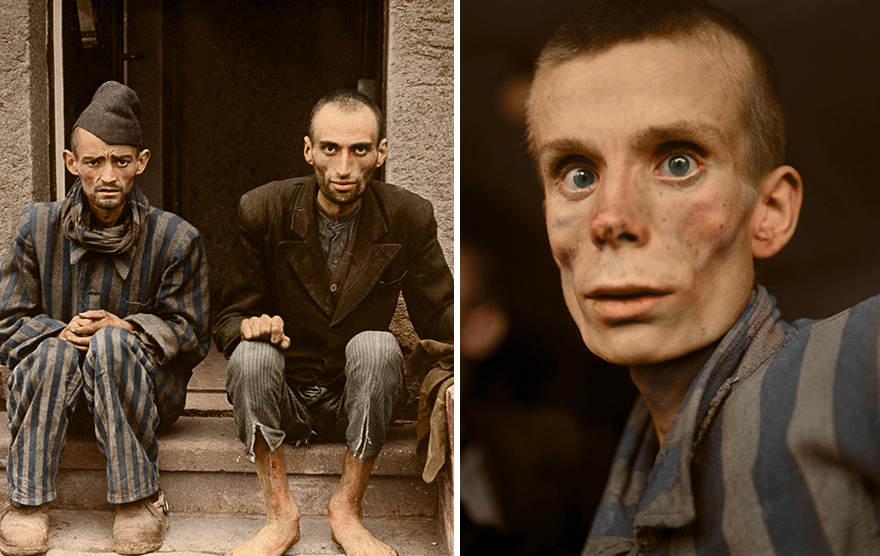
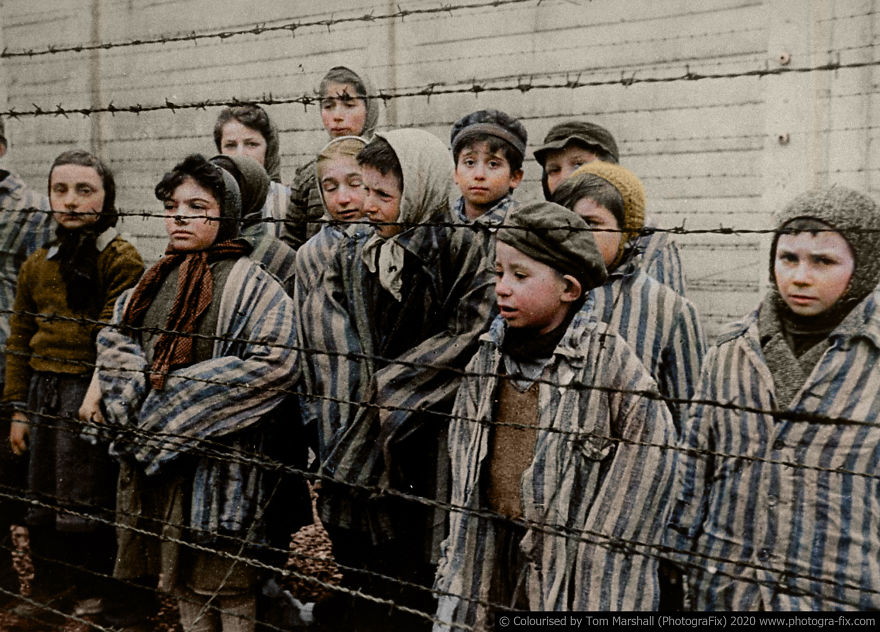
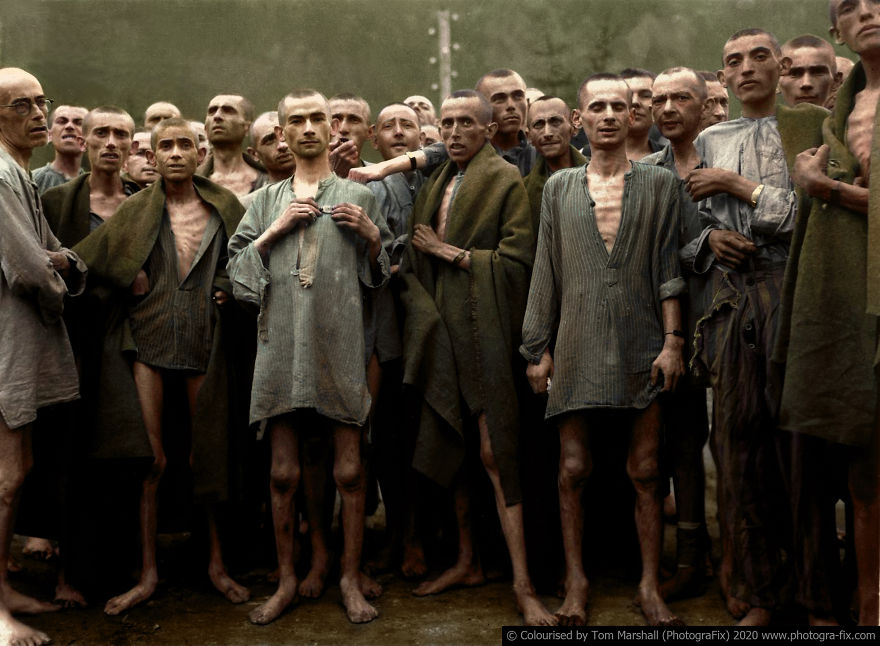
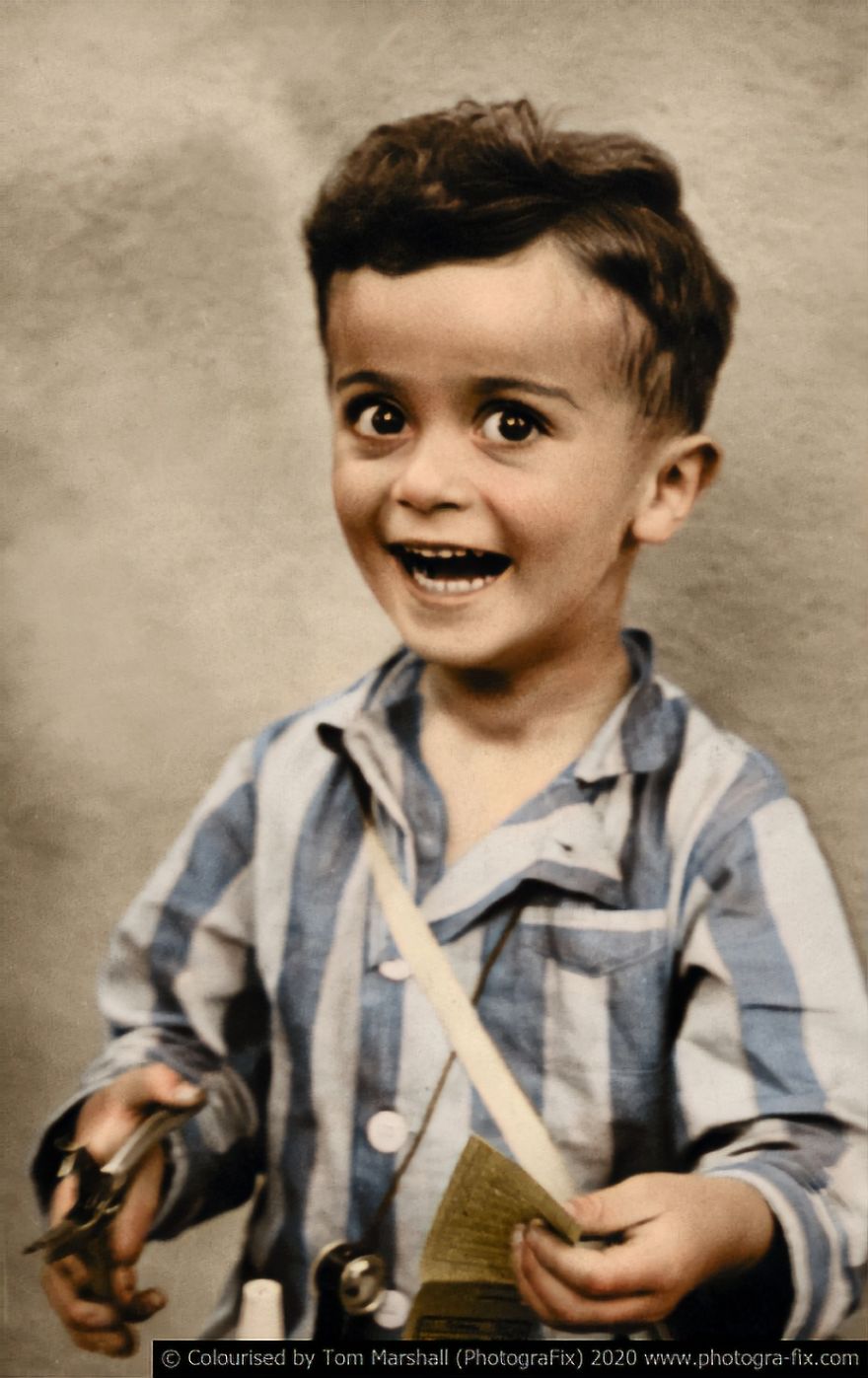
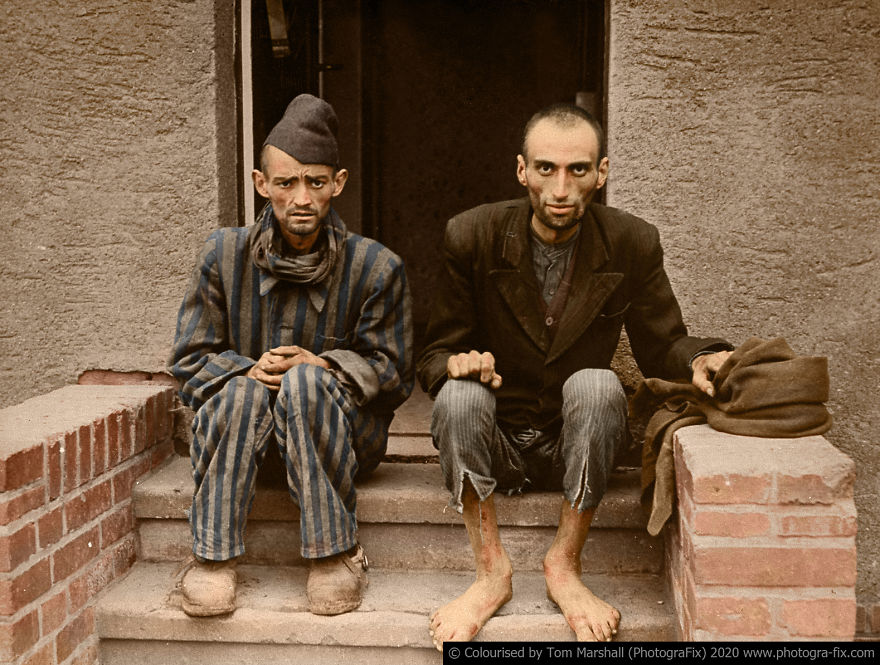
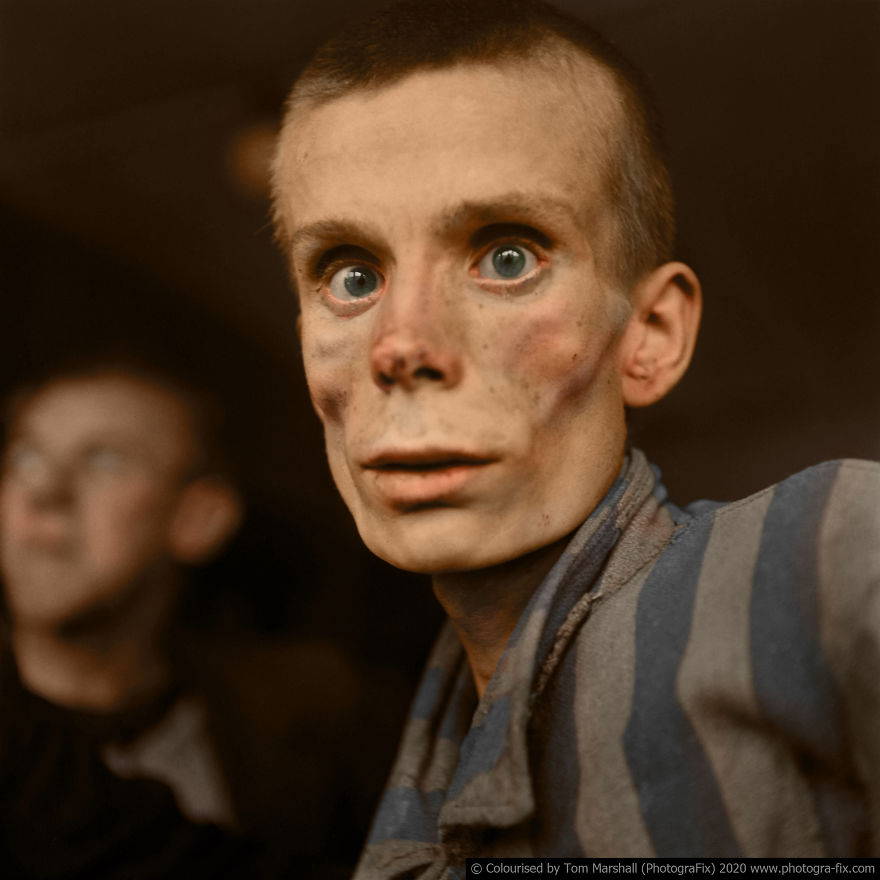
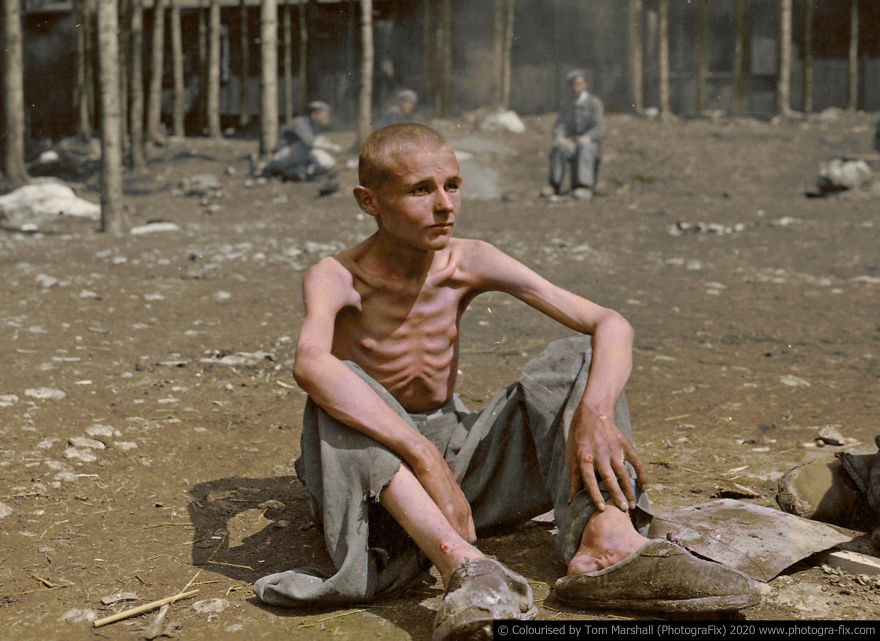
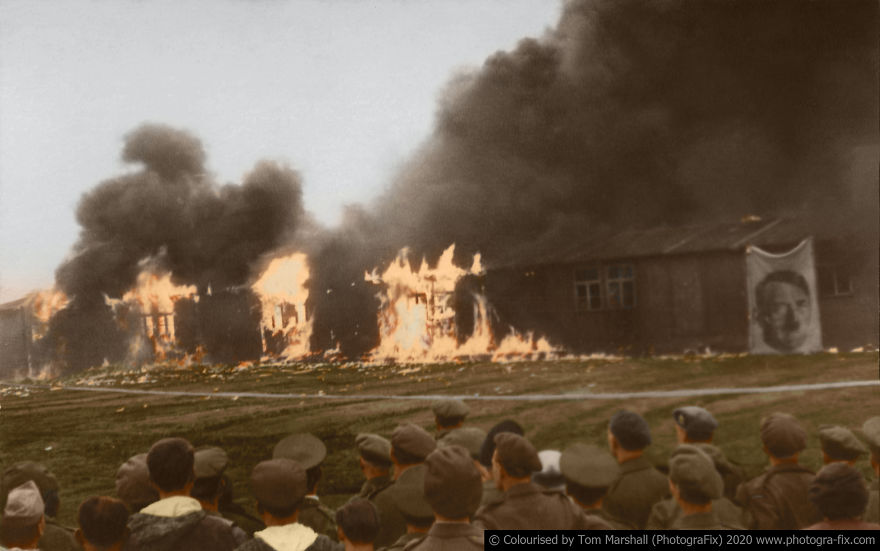
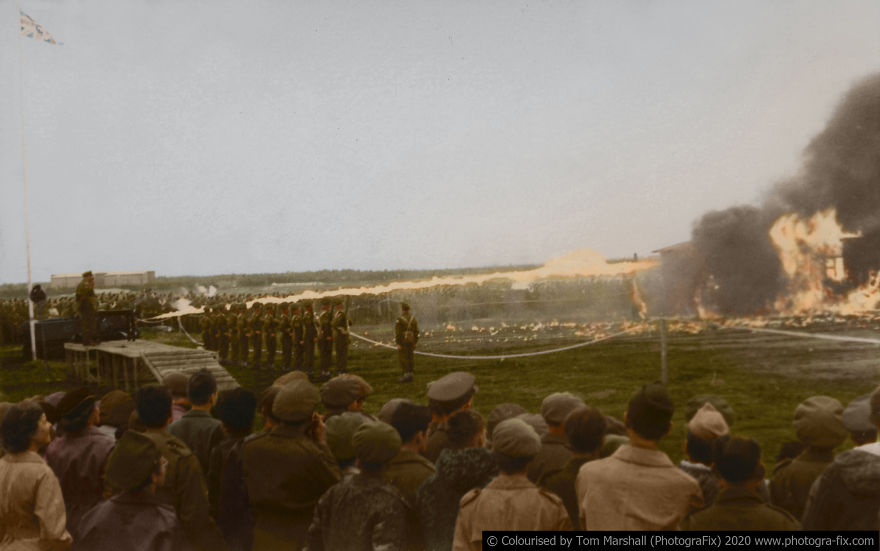
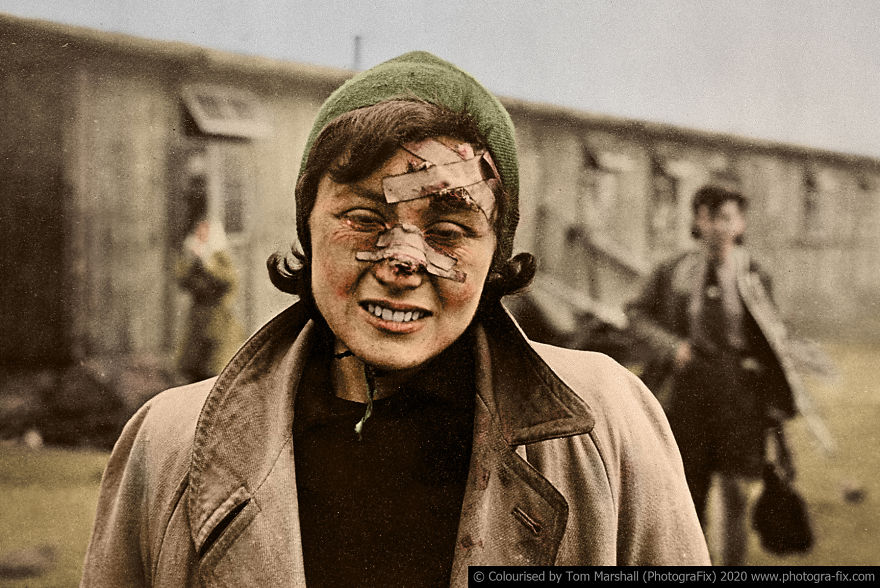
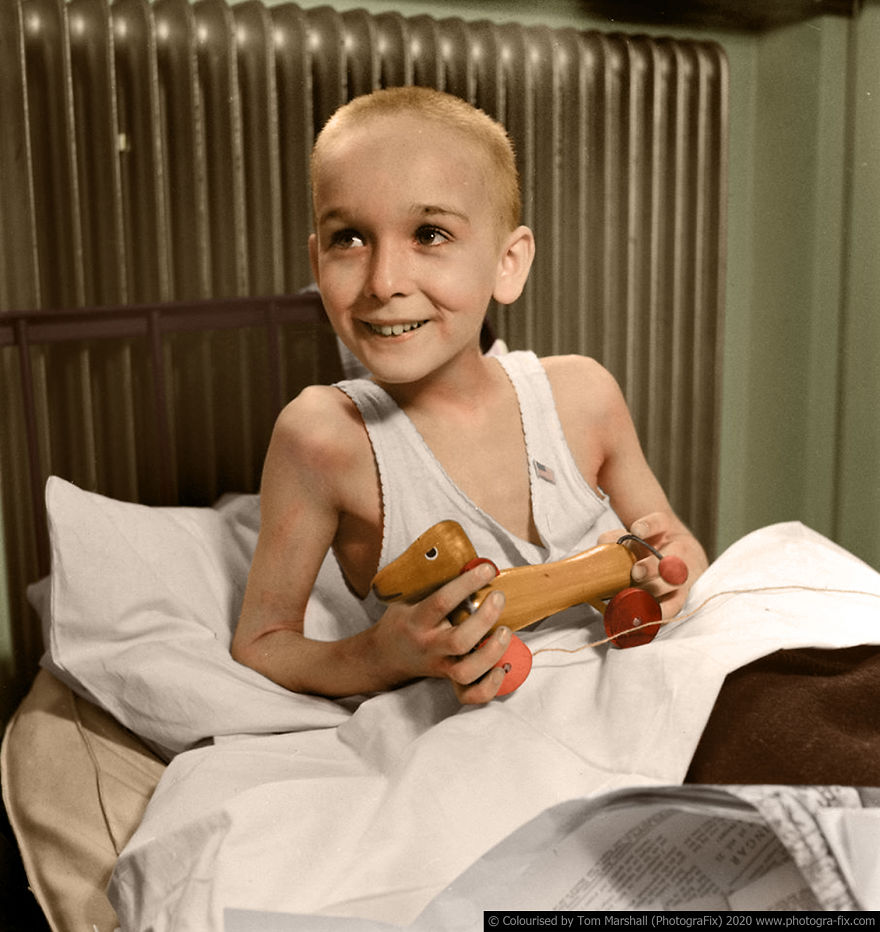
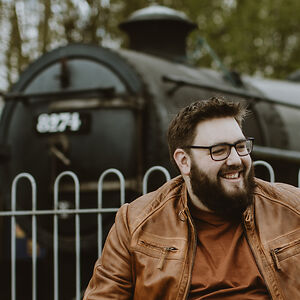
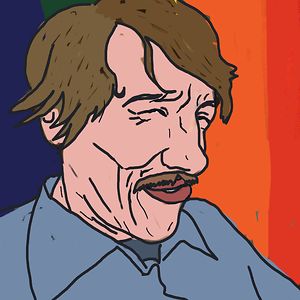


501
165